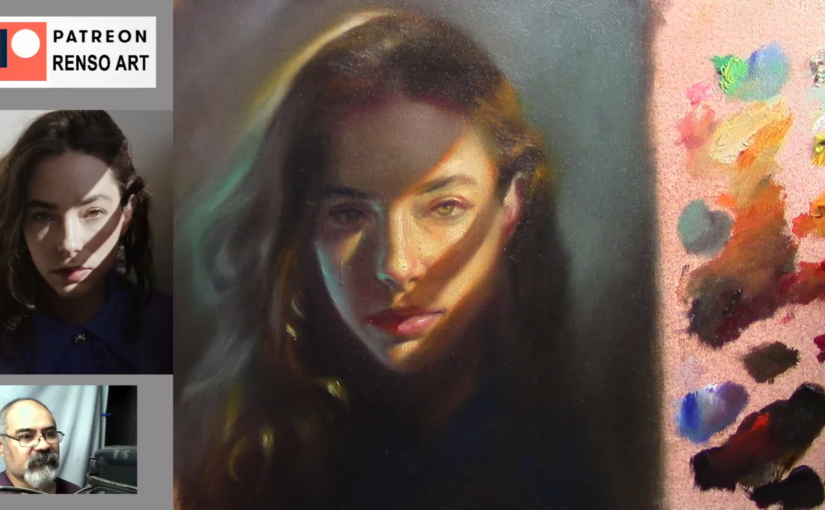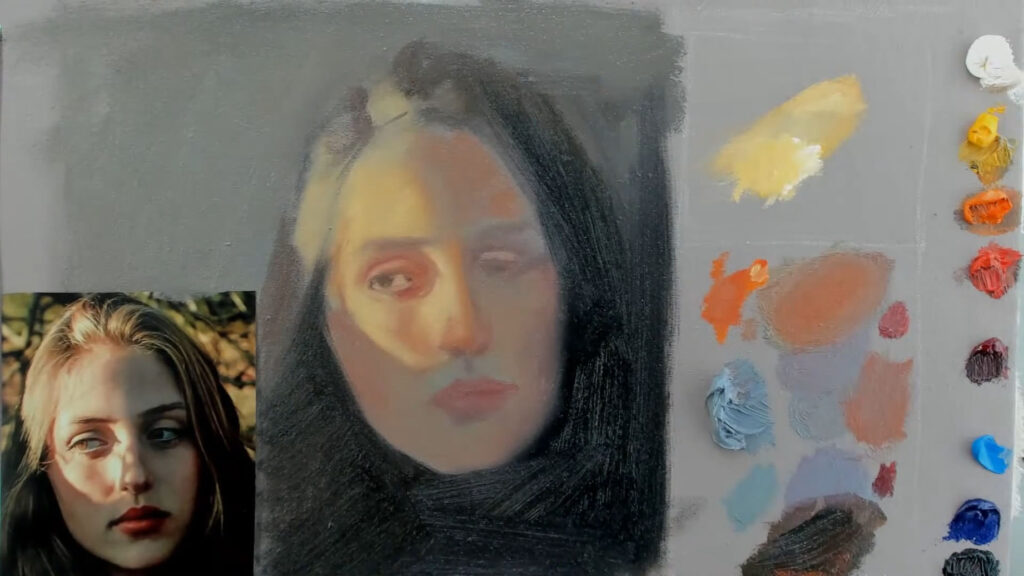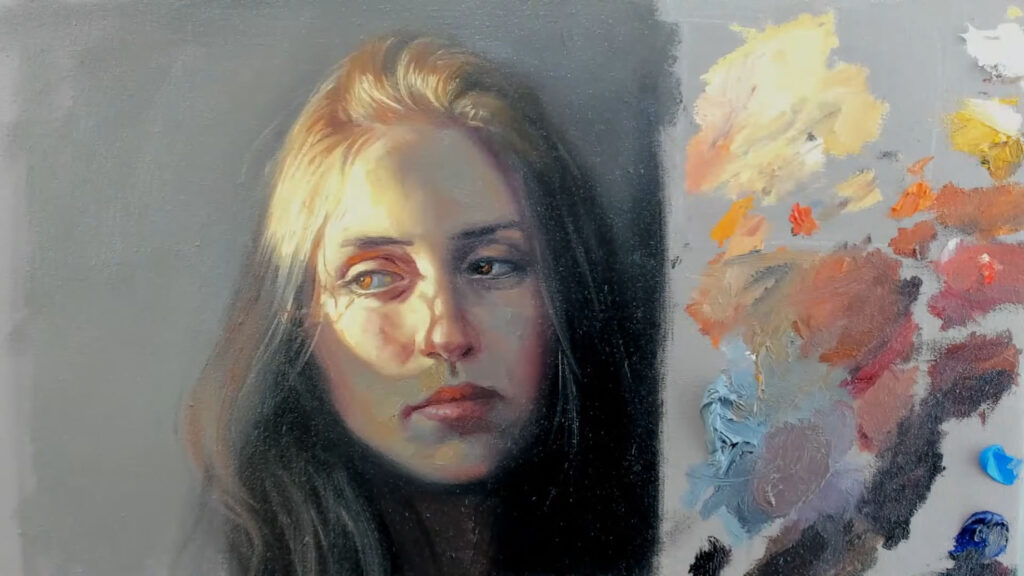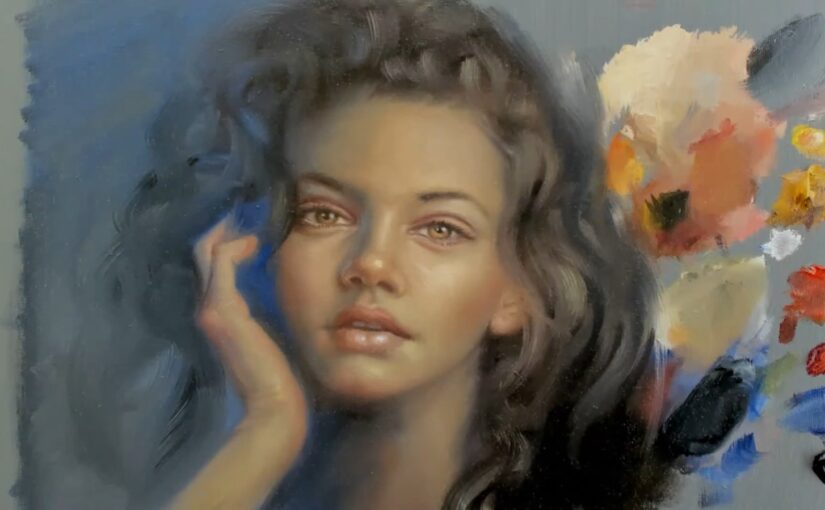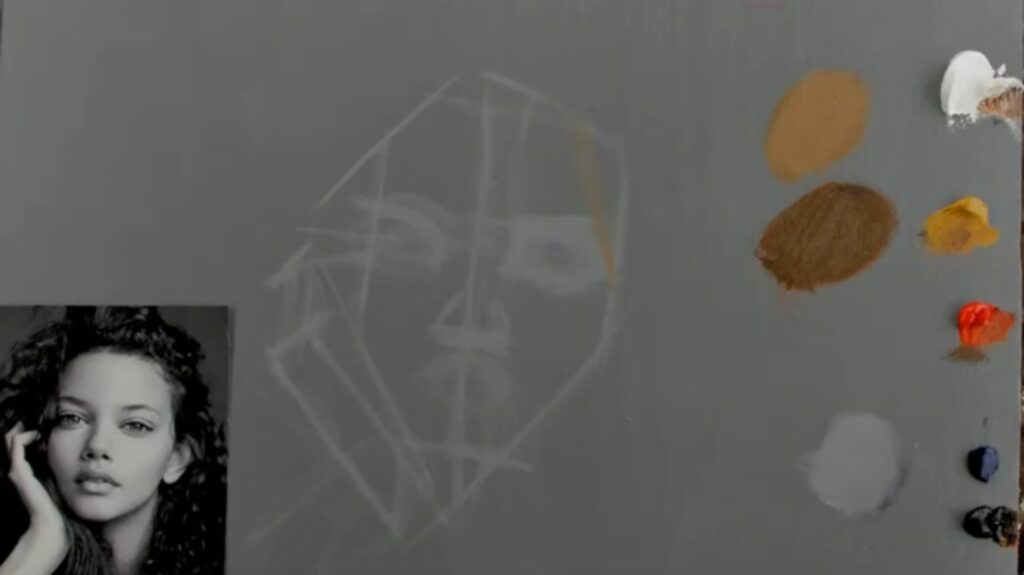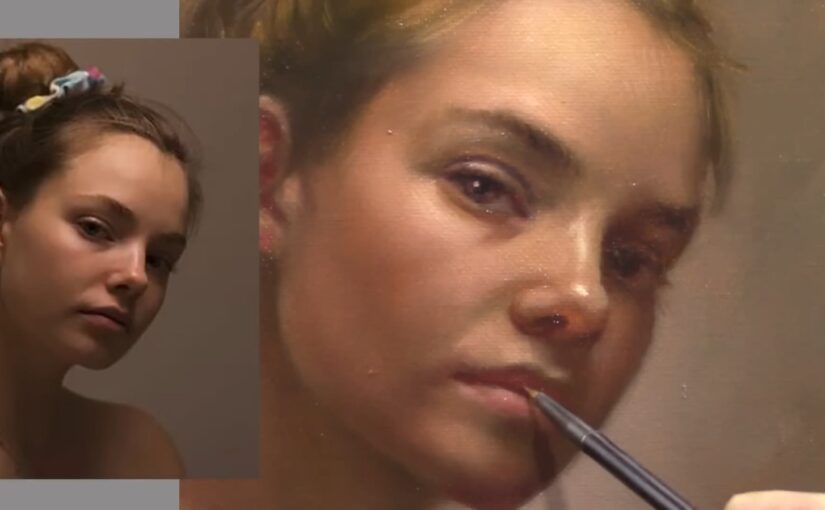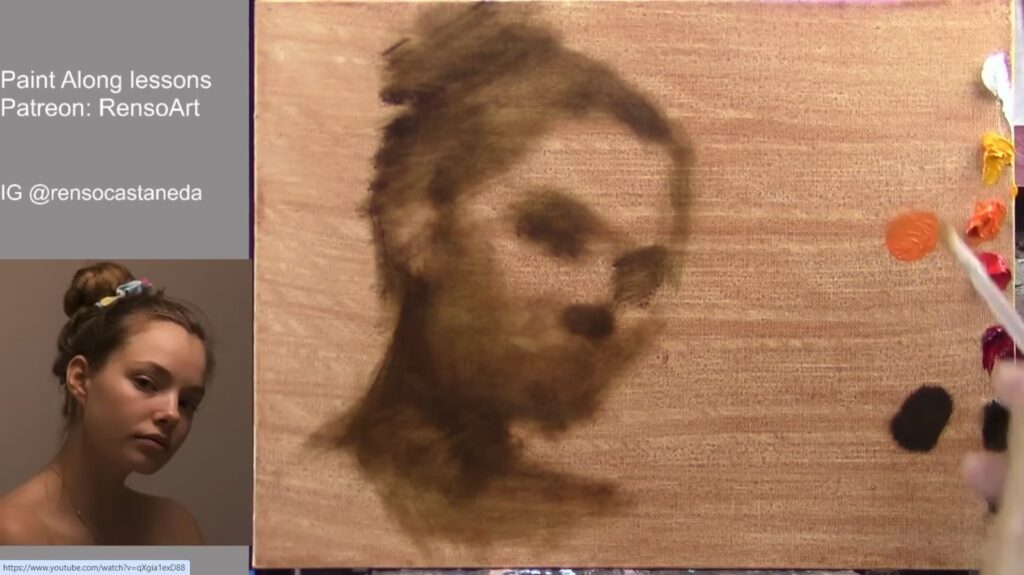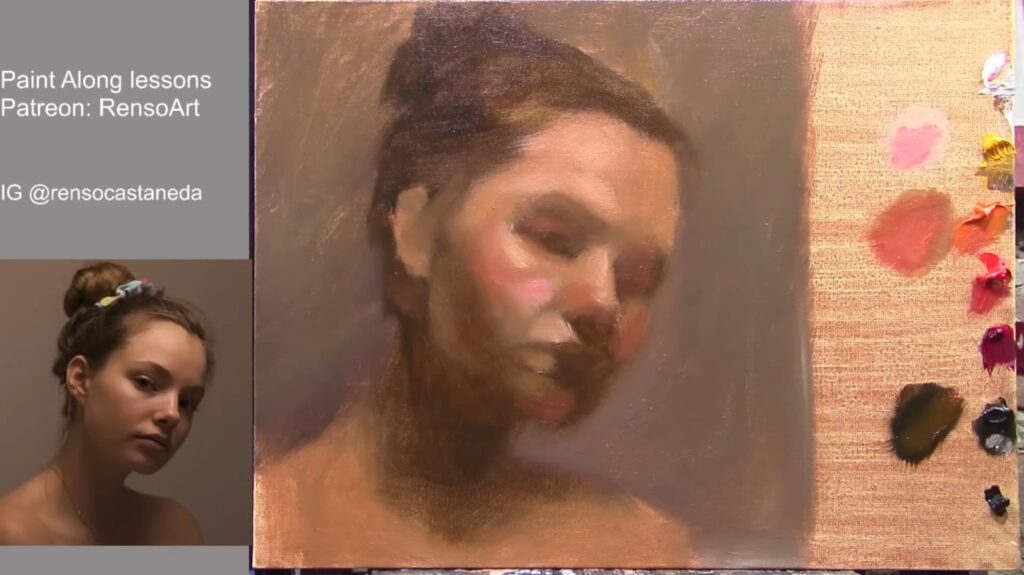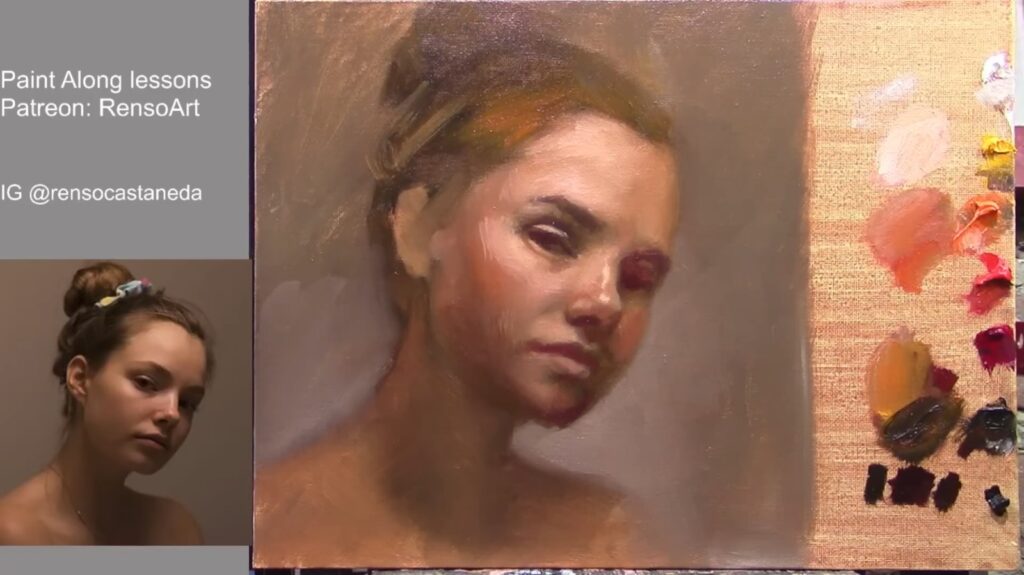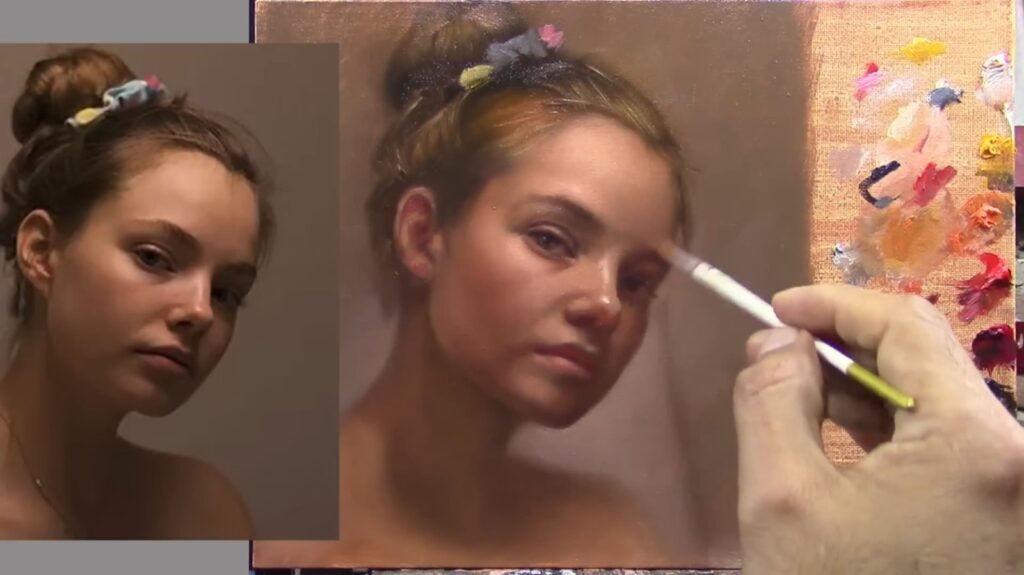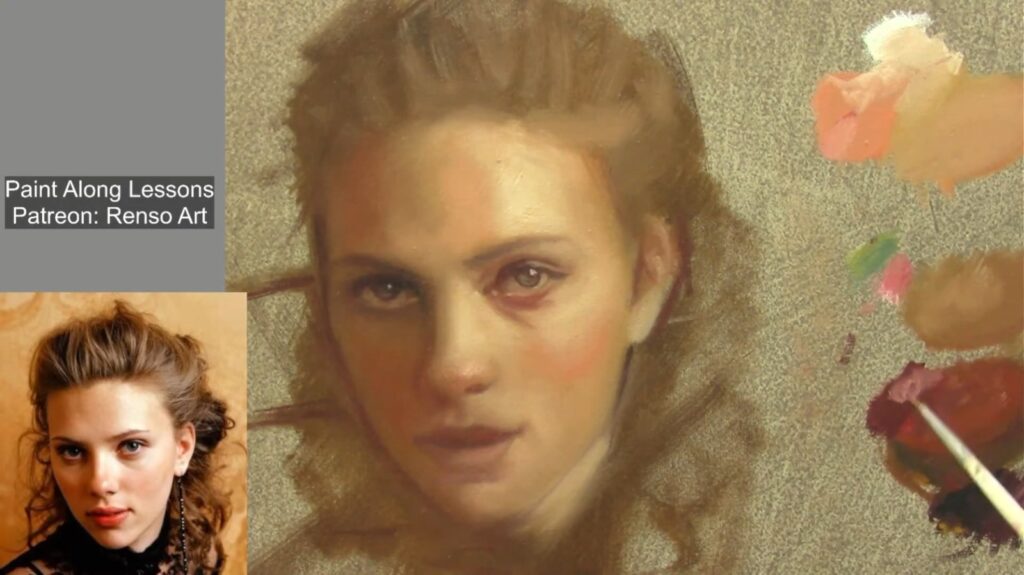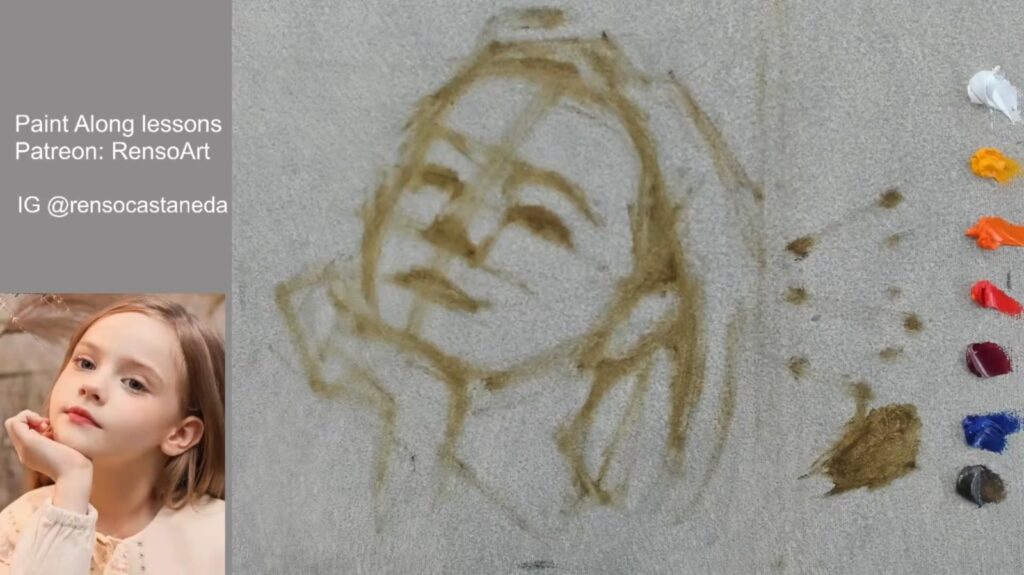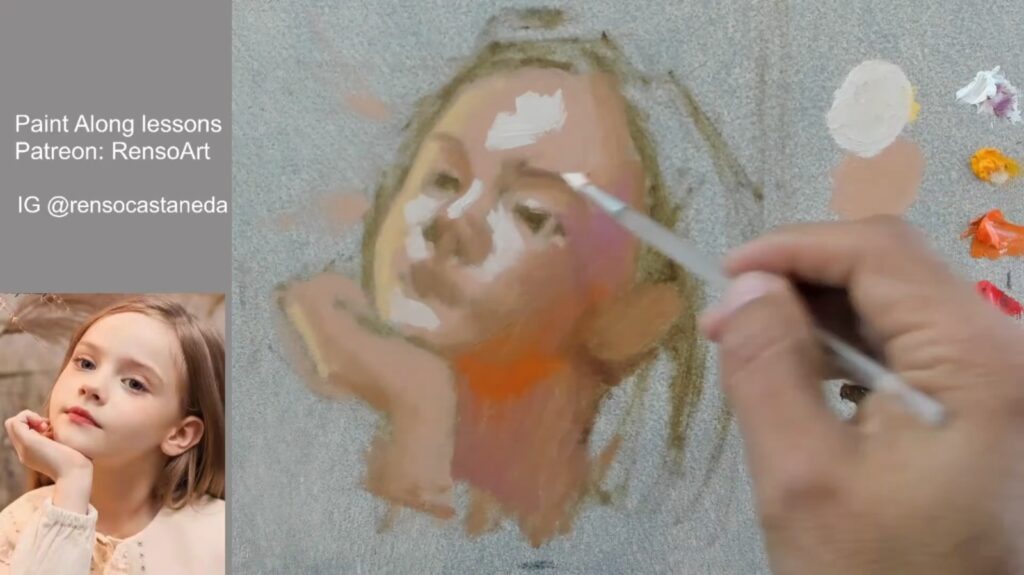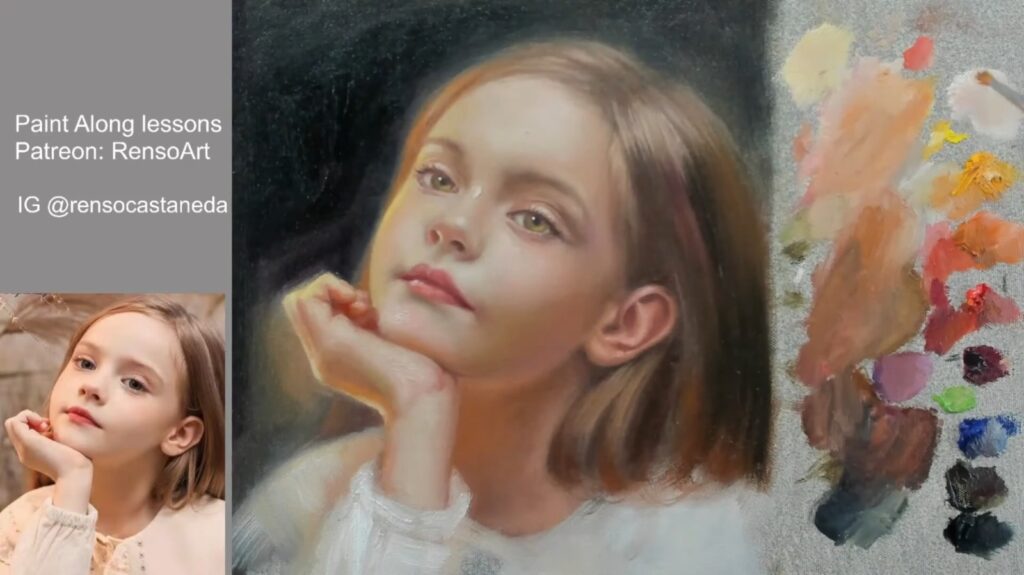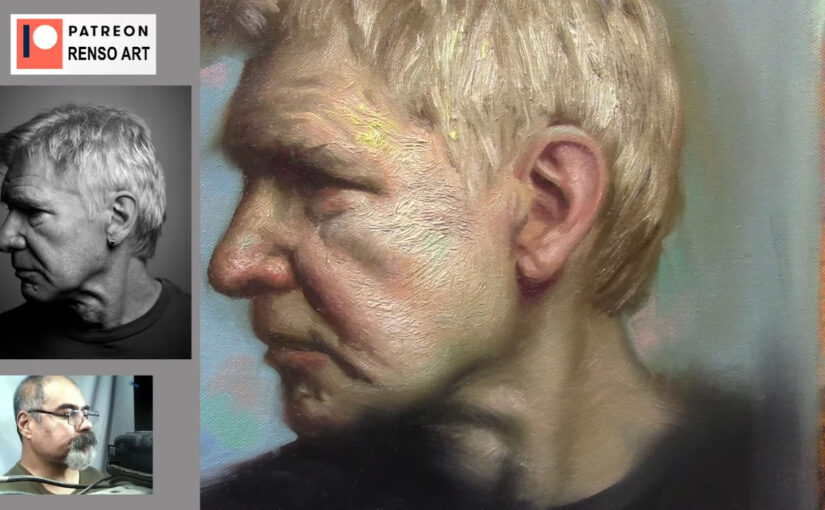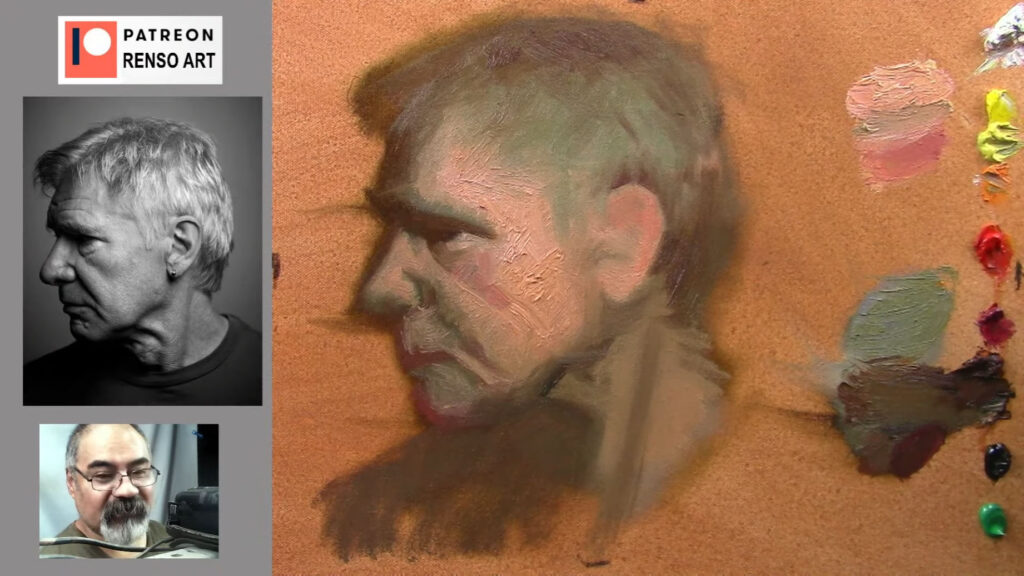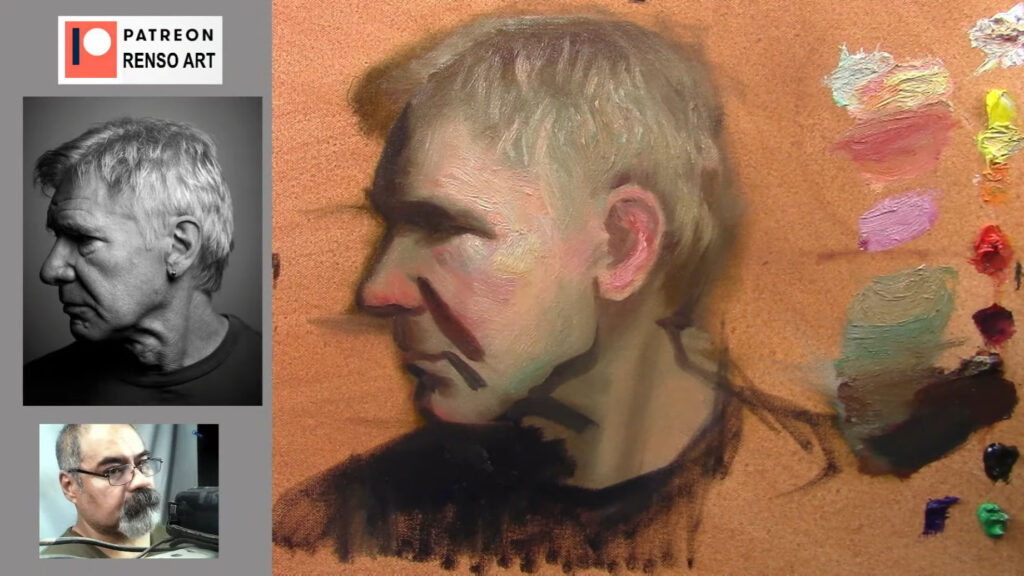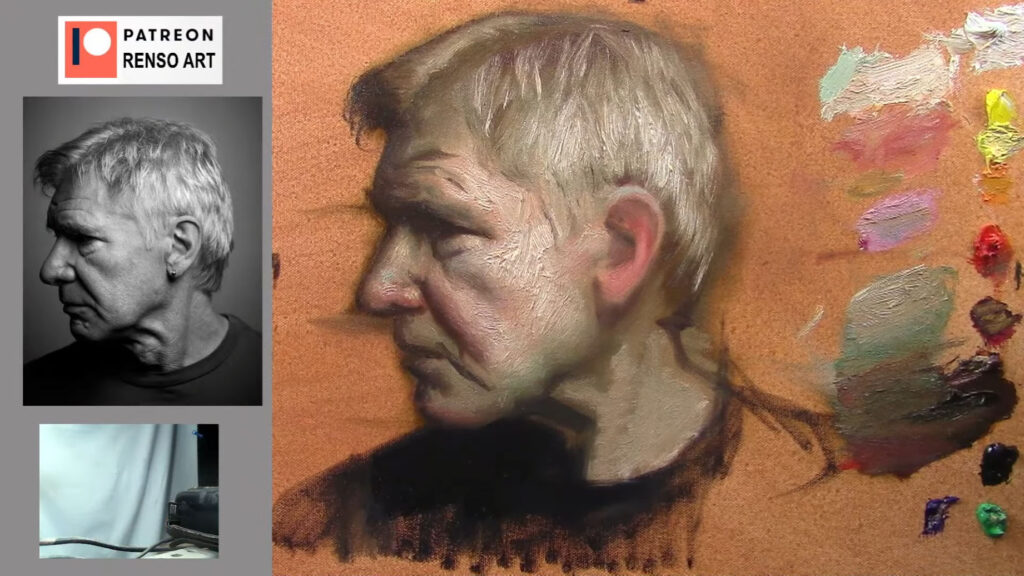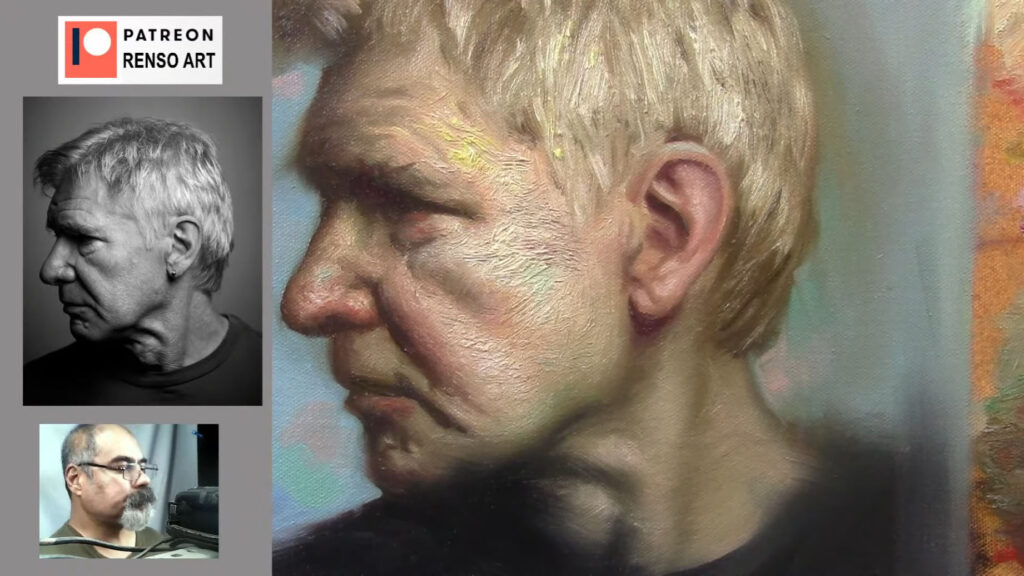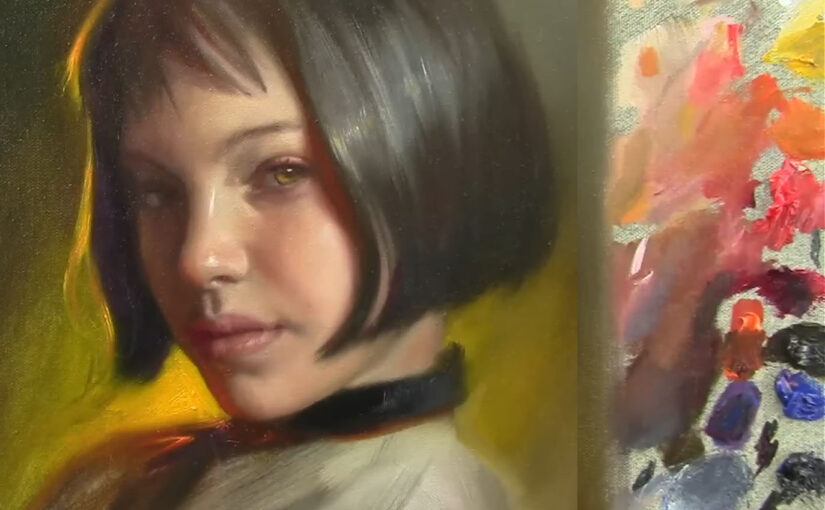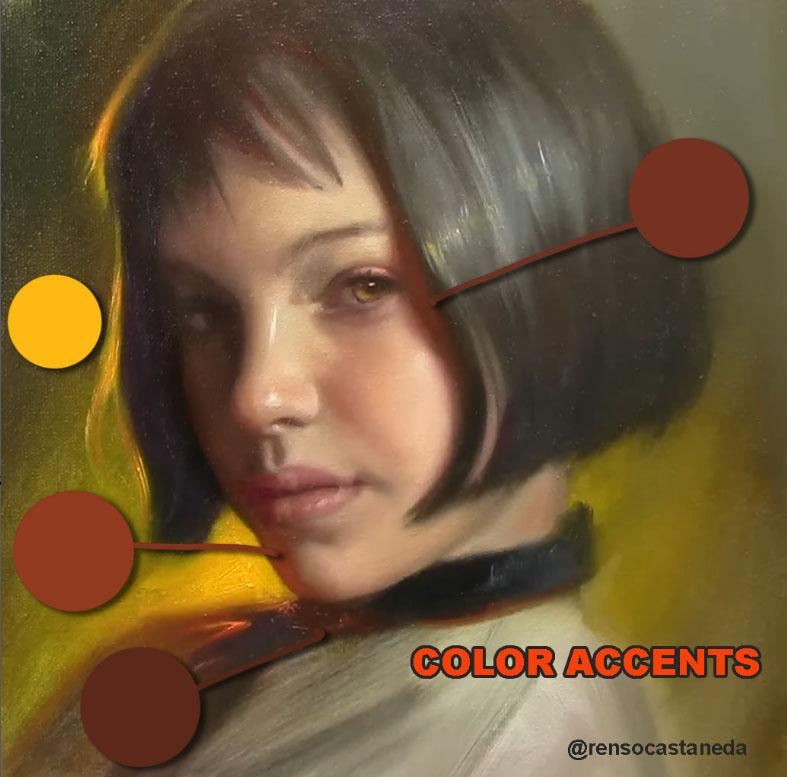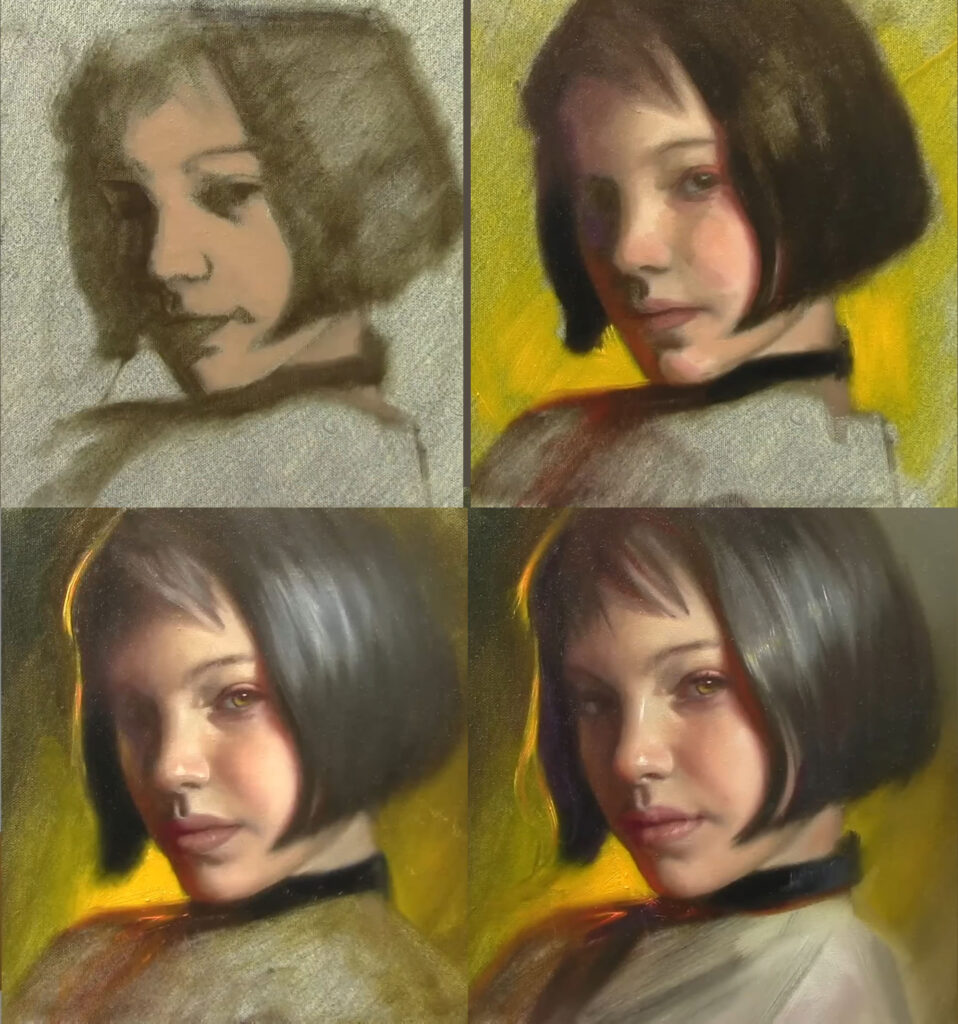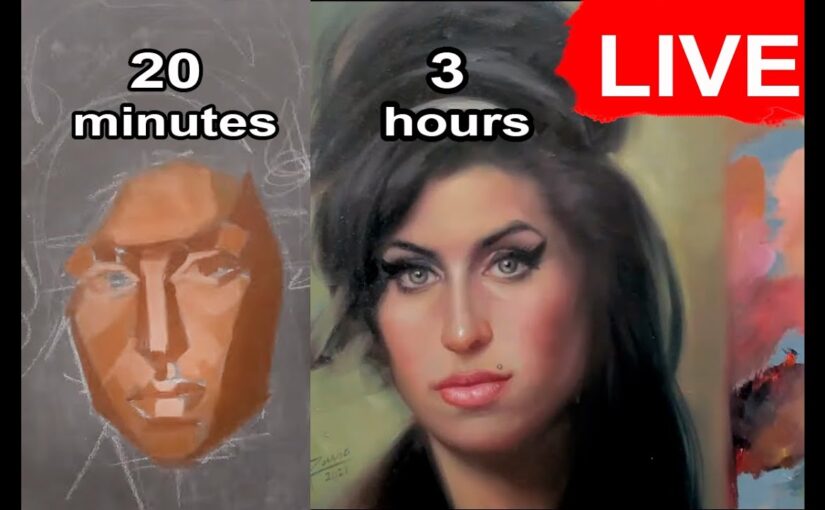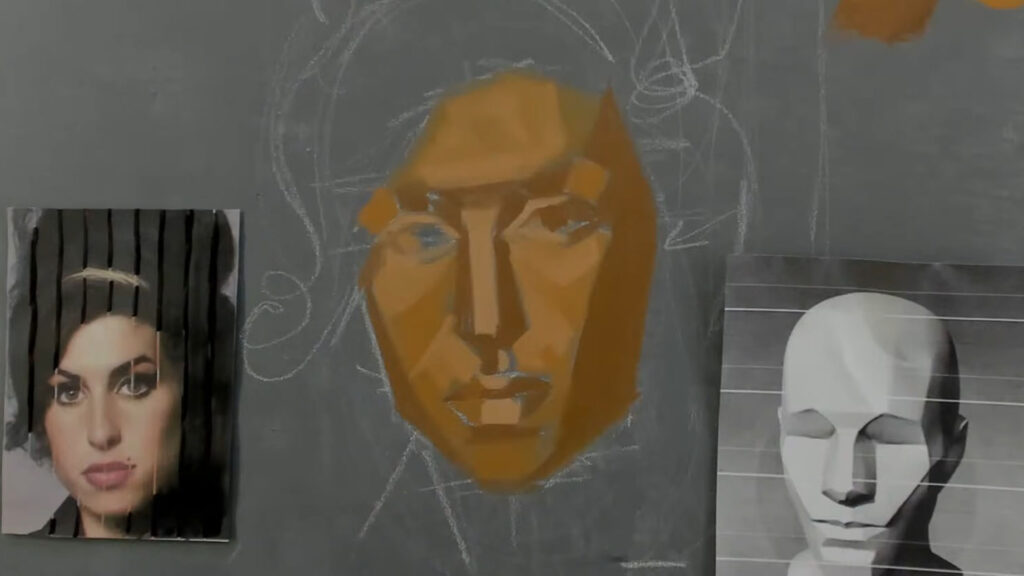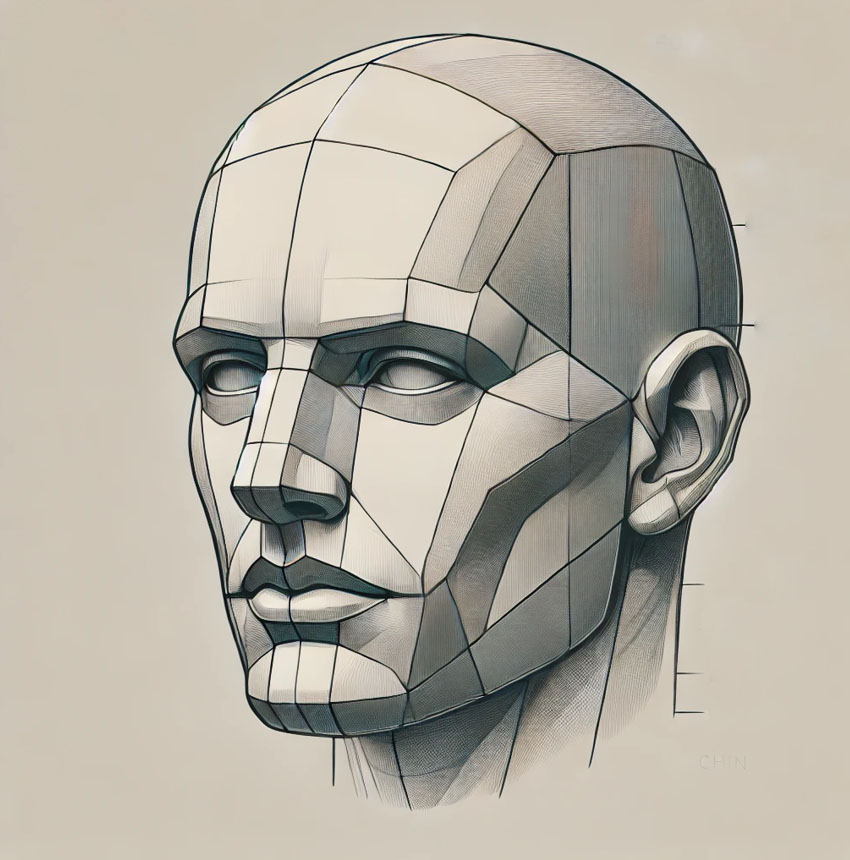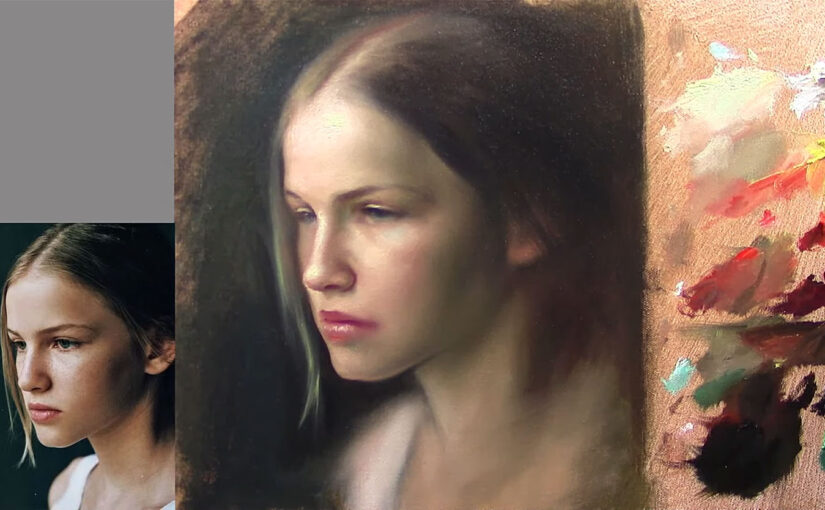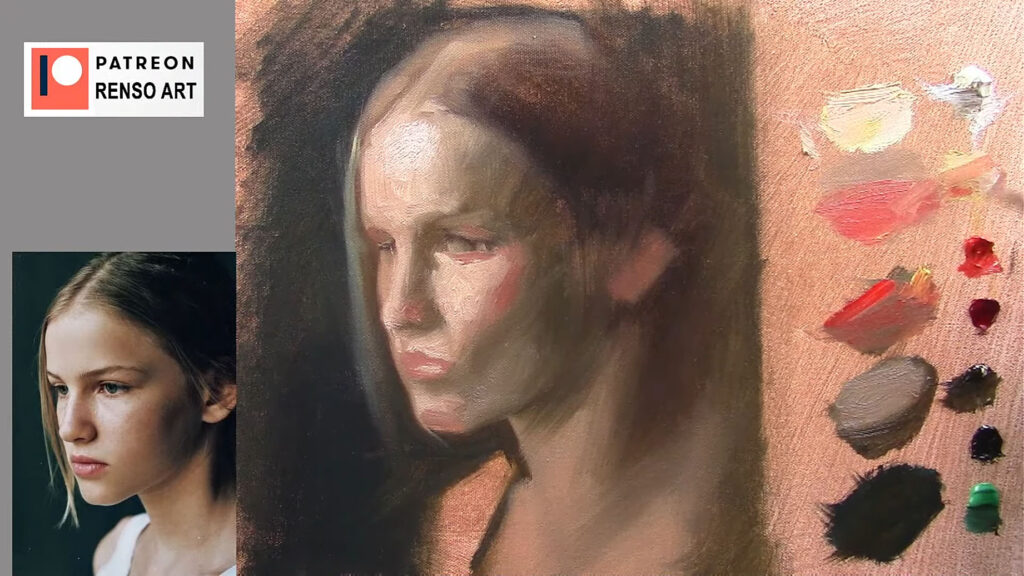Hi everyone! I’m Renso, and in this article, I want to take you through my detailed process of creating an Portrait Painting during one of my live painting sessions. Whether you’re a beginner or an experienced artist, I hope you’ll find valuable tips, techniques, and inspiration here. Portrait painting is a deeply rewarding art form, but it can also be challenging. By breaking down my process into manageable steps, I aim to make it more accessible and enjoyable for everyone. Let’s dive into the steps I follow to bring a portrait to life, along with the lessons I’ve learned along the way.
1. Preparing My Materials
Before I even touch the canvas, I make sure I have all the right tools ready. For this session, I used:
- Brushes: A mix of bristle brushes for bold, expressive strokes and soft synthetic brushes for finer details.
- Paints: My palette included titanium white, Naples yellow, cadmium orange, cadmium red, alizarin crimson, raw umber, and cobalt blue. These colors give me a wide range of tones to work with.
- Canvas: I chose a 9×9-inch canvas, which is a great size for a detailed yet manageable portrait.
- Mediums: I used linseed oil to thin the paint and improve its flow, especially when working on larger areas like the background.
I also like to use different brands of paint depending on the area I’m working on. For example, I use the more affordable Winton paints for larger areas like the background or hair, while I save my Rembrandt paints for finer details and highlights. This helps me manage costs without compromising on quality.

2. Starting with a Sketch
The first step in my process is to lightly sketch the basic shapes of the portrait. I use raw umber and a larger brush to outline the face, focusing on proportions and placement. I often rely on the Loomis method, which breaks down the face into simple measurements:
- The distance from the eyebrow to the nose is repeated to place the chin.
- The eyes are positioned on a line dividing the face into thirds.
- The mouth is placed halfway between the nose and chin.
This method helps me ensure accuracy and provides a solid foundation for the painting. I don’t worry about perfection at this stage—it’s more about getting the basic structure right.

3. Blocking in Shadows and Background
Once the sketch is complete, I move on to blocking in the darkest areas, such as the hair and shadows. I use raw umber and black to create a dark base, which helps establish the values (light and dark areas) of the Portrait Painting.
I always advise squinting your eyes to simplify the shapes and focus on the overall composition. This technique helps me identify the major light and shadow areas without getting bogged down in details. It’s amazing how much this simple trick can improve your understanding of the subject.

4. Building Up the Mid-Tones and Highlights
With the shadows in place, I start adding mid-tones and highlights. I mix Naples yellow, cadmium orange, and white to create a warm, glowing light on the face. I apply thicker paint for the highlights, making them stand out against the darker background.
I also introduce color harmony by using complementary colors. For example, I contrast the warm orange highlights with cool blue shadows, creating a dynamic and visually appealing effect. This interplay of warm and cool tones adds depth and interest to the painting.
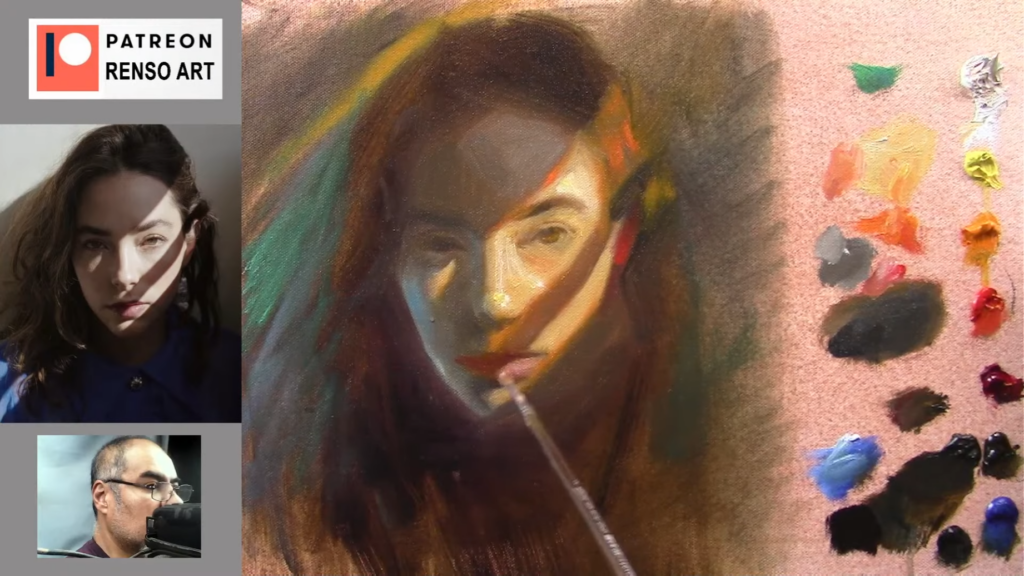
5. Refining the Features
As the painting progresses, I focus on refining the facial features. I use a smaller brush to add details like the eyes, nose, and mouth. I emphasize the importance of softening edges to create depth and realism. For instance, I soften the edges around the cheeks and jawline to make the face appear more three-dimensional.
I also pay close attention to the reflected light, adding touches of blue and green to the shadows to enhance the overall color harmony. This technique helps create a more lifelike and vibrant portrait.
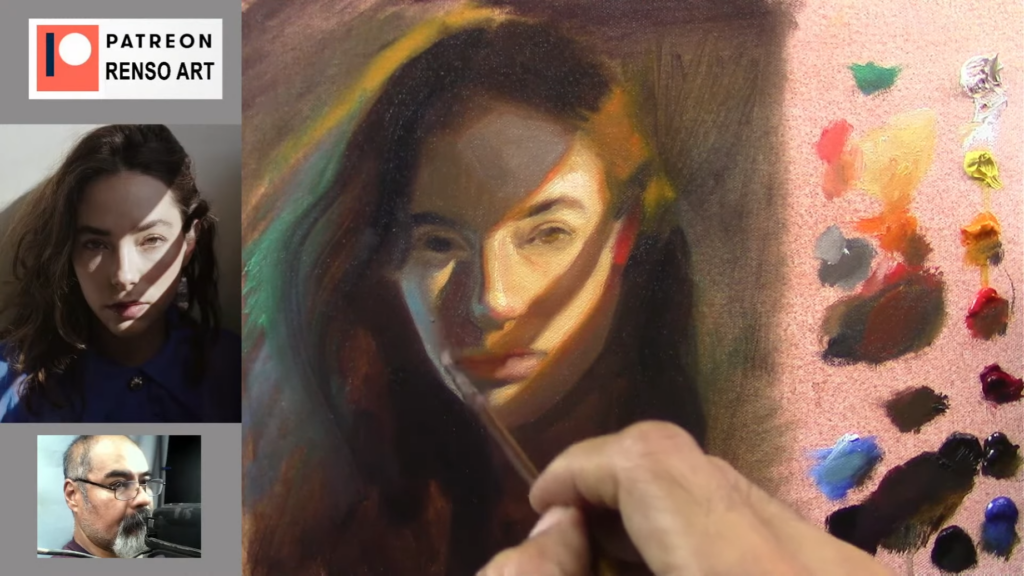
6. Adding Texture and Final Touches
To add texture and depth, I use a palette knife for areas like the hair and clothing. I also use a dry brush technique to create scratchy, textured effects for details like tree bark or grass.
For the final touches, I add small details like eyelashes, highlights on the lips, and subtle color accents. I always step back frequently to assess the overall composition and make any necessary adjustments. This helps me ensure that the painting looks balanced and complete.
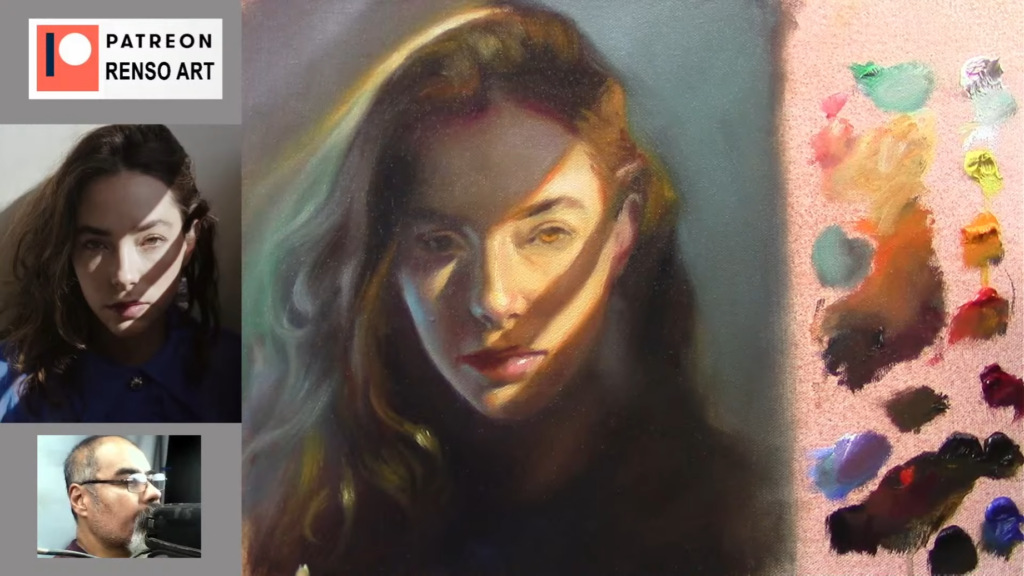
7. Knowing When to Stop
One of the most important lessons I’ve learned is knowing when to stop. Overworking a painting can lead to muddy colors and lost details. I always remind myself to step back and evaluate the painting from a distance. If it looks balanced and complete, I know it’s time to put the brush down.
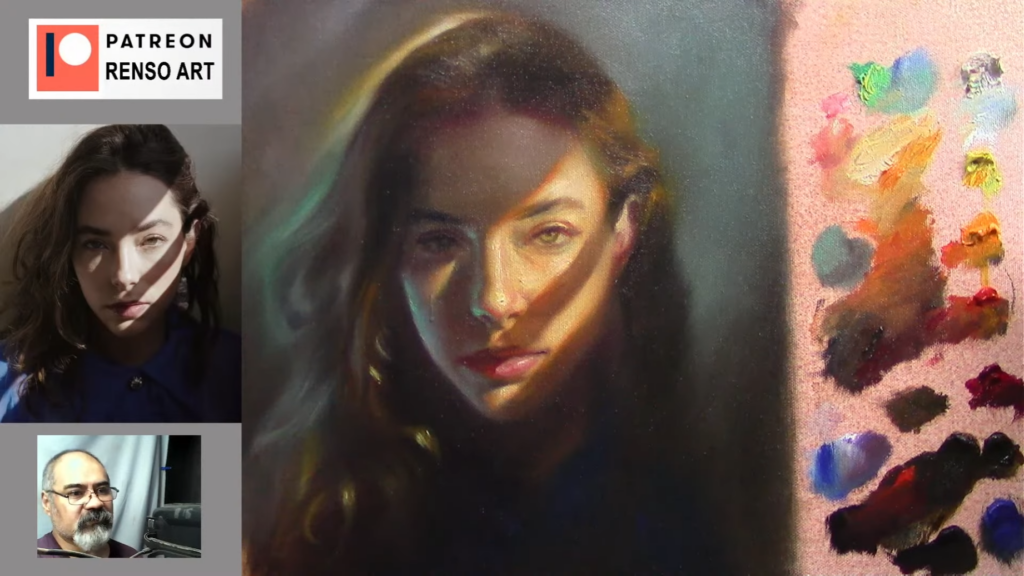
8. Lessons Learned and Tips for Beginners
Throughout my years of painting, I’ve picked up several tips and tricks that I’d like to share:
- Practice Regularly: The more you paint, the more comfortable you’ll become with the process.
- Don’t Fear Mistakes: Every mistake is an opportunity to learn and improve.
- Experiment with Techniques: Try different brushstrokes, color combinations, and styles to find what works best for you.
- Seek Feedback: Share your work with others and ask for constructive criticism. This can provide new perspectives and help you grow as an artist.
9. Common Challenges and How to Overcome Them
Portrait painting comes with its own set of challenges. Here are a few common ones and how I address them:
- Getting the Likeness Right: Capturing the likeness of a person can be tricky. I focus on the basic proportions and features first, then refine the details as I go.
- Avoiding Muddy Colors: To avoid muddy colors, I clean my brushes thoroughly before switching colors and avoid over-blending.
- Creating Depth: I use a combination of values, colors, and edges to create depth. Softening edges in the background and sharpening them in the foreground can make a big difference.
10. The Importance of Color Harmony
Color harmony is crucial in creating a cohesive and visually appealing painting. I often use complementary colors to create contrast and interest. For example, pairing warm orange highlights with cool blue shadows can make the painting pop.
I also pay attention to the saturation of colors. While it’s tempting to use bright, saturated colors everywhere, I find that balancing them with more muted tones creates a more harmonious composition.
11. The Role of Light and Shadow
Light and shadow play a key role in defining the form and volume of the subject. I always start by identifying the light source and how it affects the subject. This helps me determine where the highlights and shadows should be.
I also use reflected light to add depth and realism. For example, if the light is warm and orangey, the reflected light will often have a similar tone. However, I sometimes introduce cool colors like blue or green to create contrast and add interest.
12. The Final Stages: Adding Details and Refining
As I near the end of the painting, I focus on adding the final details and refining the overall composition. This includes adding highlights, adjusting colors, and softening or sharpening edges as needed.
I also take the time to step back and assess the painting from a distance. This helps me see the overall composition and make any final adjustments.
13. Conclusion
A Portrait Painting is a journey, and every piece teaches me something new. Whether you’re just starting out or have been painting for years, I encourage you to keep experimenting and pushing your boundaries. Remember, the key is to enjoy the process and let your creativity flow.
Here are some questions from viewers during Renso’s live painting session, along with his answers, which provide valuable insights for beginners and aspiring artists:
1. Viewer: “When do you use linseed oil in your painting?”
“I usually don’t use linseed oil that much, but for today’s painting, I used it because I was planning to change the colors. If I’m not sure about the color harmony, I start with very little paint and then add thicker paint later. I also use linseed oil when painting larger areas, like the background, to help the paint flow better.”
2. Viewer: “How do you avoid overworking your painting?”
“Overworking happens when you spend too much time blending or adding too many details. I recommend working on the entire painting in stages and stepping back frequently to assess the overall composition. Knowing when to stop is key—sometimes less is more.”
3. Viewer: “What are some bad habits to avoid as a beginner?”
“One bad habit is over-blending or adding too many sharp edges everywhere. It’s important to balance soft and sharp edges to create depth. Another habit is not cleaning your brushes properly, which can muddy your colors. Always clean your brush before picking up a new color.”
4. Viewer: “How do you paint realistic eyes?”
“I start by sketching the basic shape of the eyes and then add details like the iris, pupil, and highlights. I use a small round brush for precision and soften the edges around the eyes to create a natural look. Observing the reference photo closely is crucial for accuracy.”
5. Viewer: “How do you create a warm light effect?”
“To create a warm light effect, I use warm colors like cadmium orange and Naples yellow for the highlights. I then contrast this with cooler colors like blue or green in the shadows to enhance the warmth of the light.”
6. Viewer: “What is the Lumis method for drawing faces?”
“The Loomis method is a technique for drawing faces by breaking them into simple shapes and proportions. For example, you measure the distance from the eyebrow to the nose and repeat that measurement to place the chin. The eyes are placed on a line dividing the face into thirds, and the mouth is placed halfway between the nose and chin.”
7. Viewer: “How do you fix mistakes in your painting?”
“Don’t be afraid of mistakes. If you make a mistake, let the paint dry and then paint over it. I also recommend using thicker paint to cover errors and adjusting values or colors as needed. Sometimes, mistakes can lead to happy accidents!”
8. Viewer: “How do you paint realistic hair?”
“I start by blocking in the darkest areas of the hair with raw umber and black. Then, I add highlights with warmer colors like orange or yellow, using quick, directional brushstrokes to mimic the flow of hair. It’s all about creating texture and movement.”
9. Viewer: “How do you create contrast in your painting?”
“I create contrast by using complementary colors (like orange and blue) and ensuring there’s a clear difference between light and dark values. I also add small accents of bright color (like red or green) to make certain areas pop.”
10. Viewer: “How do you paint a glowing effect?”
“To create a glowing effect, I use warm, bright colors like cadmium yellow and white for the highlights. I contrast this with darker, cooler colors in the shadows to make the light areas appear even brighter.”
11. Viewer: “How do you mix colors for skin tones?”
“I mix Naples yellow, cadmium orange, and white for warm highlights on the face. For shadows, I use raw umber and alizarin crimson. I also add touches of blue or green in the shadows to create contrast and harmony with the warm highlights.”
12. Viewer: “How do you paint a dark background?”
“I mix raw umber and cobalt blue to create a dark background. I apply the paint thinly at first and then build up the layers to create depth. Darkening the background further helps the subject (like a face or flower) stand out.”
13. Viewer: “How do you add texture to your painting?”
“I use a palette knife to add texture, especially in areas like hair or clothing. I also use a dry brush technique to create scratchy, textured effects for details like tree bark or grass.”
14. Viewer: “How do you avoid muddy colors?”
“To avoid muddy colors, clean your brush thoroughly before picking up a new color. Also, avoid over-blending—sometimes it’s better to leave colors slightly separate to maintain their vibrancy.”
15. Viewer: “How do you know when a Portrait Painting is finished?”
“It’s finished when you feel like adding more might ruin it. I often step back and assess the painting from a distance. If it looks balanced and complete, I stop. Sometimes, less is more.”
Conclusion
A Portrait Painting doesn’t have to be complicated. By breaking the process into simple steps and focusing on basic techniques, you can create beautiful artwork even as a beginner. Remember, the key is to enjoy the process and keep practicing.
So grab your brushes, pick up your palette, and start painting! Whether it’s a portrait, landscape, or abstract piece, the possibilities are endless. Happy painting! 🎨
